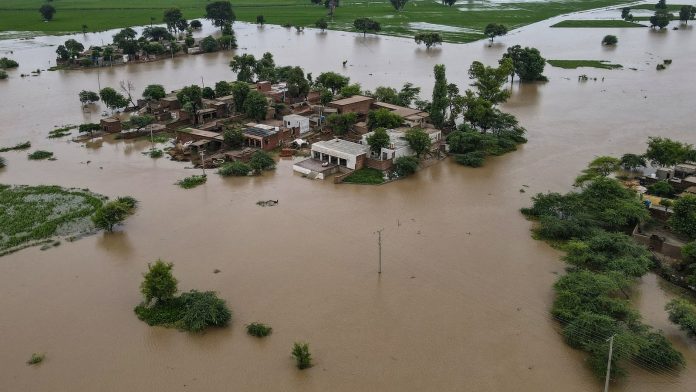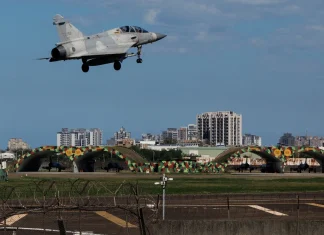When Rivers Run Through Rivalry: Flood Warnings Rekindle a Fragile Connection Between India and Pakistan
In a region where the flow of water has long been as contentious as territorial lines, a surprising act of shared humanity now shines through the monsoon-drenched tensions: India has issued a warning to Pakistan about potentially devastating floods creeping across their disputed borders.
This gesture, exchanged amid some of the most dangerous floods and political tempests the region has seen in decades, offers a haunting reminder that nature’s forces often transcend human conflicts.
A Surprising Signal Amid Steep Tensions
For more than half a century, the Indus Waters Treaty, brokered in 1960 with the World Bank’s support, has been a lifeline guiding the management of some of South Asia’s most vital rivers.
It splits the precious resource between India and Pakistan—three rivers flow predominantly to Pakistan, three to India. Yet this treaty’s calm waters recently became turbulent. In April, New Delhi effectively suspended the treaty in retaliation for a brutal attack on Indian tourists in Jammu and Kashmir, believed by India to be linked to Pakistan, a claim Islamabad denies emphatically.
To many, the announcement that India’s High Commission in Islamabad had shared warnings about potential flooding with Pakistan’s foreign ministry was startling news. The communication explicitly stated that it was made on “humanitarian grounds” and distinctly separate from the official and now-suspended treaty mechanisms.
“It was unexpected, but absolutely necessary,” confided a Pakistani disaster management official, Mazhar Hussain, from Punjab province. “We rely on such alerts to prepare communities and save lives. This kind of cooperation is what people on the ground need, beyond political disputes.”
The Relentless Monsoon and the Human Cost
For millions living along these transboundary waterways, the monsoon season of 2024 has been miserably relentless. In northern India, floods have claimed at least 60 lives, while in Pakistani Punjab and its northwest territories, nearly 400 have perished. The National Disaster Management Authority of Pakistan reports a staggering total of 799 deaths across the country since the monsoon began late June—and warns of more torrential rain until early September.
In villages in Punjab, Pakistan, where fertile fields usually burst with wheat and rice, farmers now face muddy fields submerged under floodwaters. “We had just harvested some crops last year,” a local farmer lamented, steering his cart through floodwaters. “Everything is lost again. The river does not care about borders or politics.”
Water, Power, and Prestige: The Stakes Beyond the Floods
The warning issued to Pakistan spoke of a looming surge along the Tawi River, which feeds into the Sutlej River before crossing into Pakistani territory. This warning, though non-specific about the scale, carries grave implications. “Heavy rains on the Indian side have swelled dams to capacity,” Hussain explained. “When India releases this water, combined with our own rains, rivers like Sutlej, Ravi, and Chenab could flood the Punjab plains.”
This is no small matter for Pakistan, where agriculture accounts for about 25% of the country’s GDP and employs nearly 40% of the workforce. The Indus Basin irrigation system nourishes 17 million hectares of farmland—making it the backbone of national food security and hydroelectric power supply. Any disruption in river flow could precipitate a domino effect of food shortages, electrical blackouts, and economic upheaval.
Understandably, there is suspicion beneath the surface of this humanitarian alert. Pakistan’s foreign ministry reiterated its call for India to respect the terms of the Indus Waters Treaty, condemning New Delhi’s earlier “unilateral declaration to hold the Treaty in abeyance” as a breach of international law that could destabilize the region further.
Ripples of Hope or a Mirage? Navigating Complex Water Diplomacy
So what do these flood warnings mean in the grand scheme of India-Pakistan relations? Can humanitarian cooperation around natural disasters become a bridge in a dialogue riven with decades of conflict, territorial disputes, and deep mistrust?
Experts who watch South Asia’s water politics paint a cautiously optimistic picture. Dr. Amina Qureshi, a regional water security scholar at Lahore University, reflects, “Water, ironically, might be one of the few forces strong enough to compel these two nations to communicate. When lives are at risk, politics can sometimes give way to pragmatism.”
Her counterpart in India, Ravi Patel, points out, “The tricky part is not just sharing information but institutional trust. With years of erratic diplomatic relations, any goodwill must be nurtured carefully. Flood alerts are a good first step but we need systemic resilience built into these bilateral mechanisms.”
What Can the World Learn from South Asia’s Water Wars?
India and Pakistan’s flood crisis underscores a fundamental challenge in today’s global landscape: the clash and coexistence of natural phenomena with political boundaries. As climate change intensifies and extreme weather events become more frequent worldwide, transboundary water management will grow increasingly critical—and fraught.
Consider the millions across the globe who live along contested rivers and lakes—from the Nile Basin in Africa to the Mekong in Southeast Asia. Their fates may hinge on the same mix of cooperation, distrust, and fragile treaties we witness here.
For many readers wondering how to grasp these entangled realities, here’s a prompt: What would you do if your neighbor’s dam releases torrents that could wipe out your home? Do you see water as a shared treasure, a potential weapon, or both? How can humanity rise above the divisions that separate us to honor the essential flows that connect us all?
The Human Story Beneath the Headlines
Behind every statistic of rainfall, floodwater, or diplomatic communiqué, there are ordinary people living precariously in river valleys. In Jammu and Kashmir, Srinagar’s ancient Wullar Lake swells relentlessly, its waters creeping toward villages whose wooden homes stand on stilts. Residents here speak of the river as a living force—simultaneously giver and taker of life.
“We’ve learned to respect the river’s moods,” said Samina Bhat, a local teacher. “But this year, the river is angry. It washes away not just land, but memories too.”
On the Pakistani side, children wade through flooded fields searching for livestock; elders gather to share stories of past floods and hopes for rains to end. Communities brace for the days ahead, weaving resilience amid uncertainty.
And while borders and politics may dominate headlines, it is these shared human experiences—the shared water, the shared vulnerability—that remind us: Amid conflict, cooperation can still flow.
As the monsoon pours down on South Asia in 2024, the question lingers: Will the rivers that divide also inspire the bridges we so desperately need?









